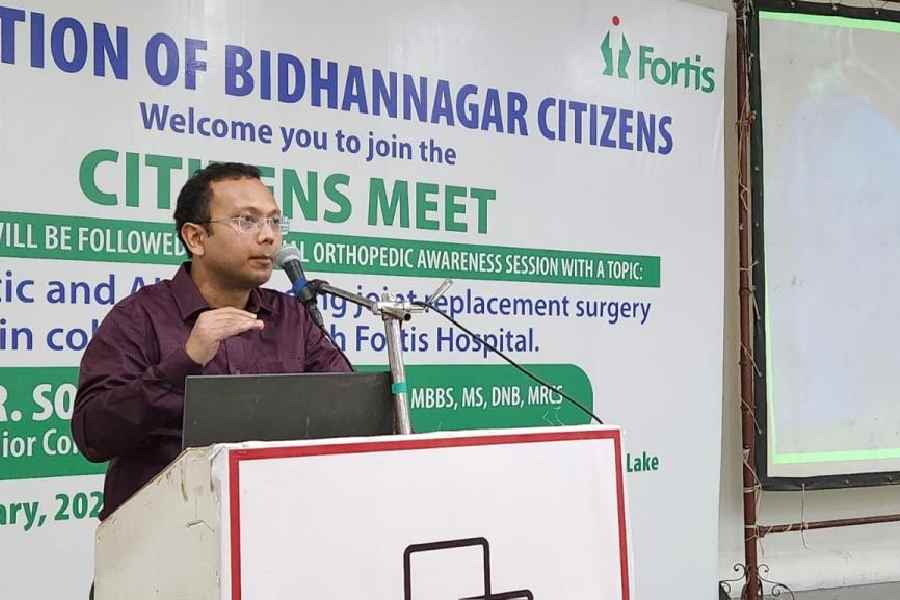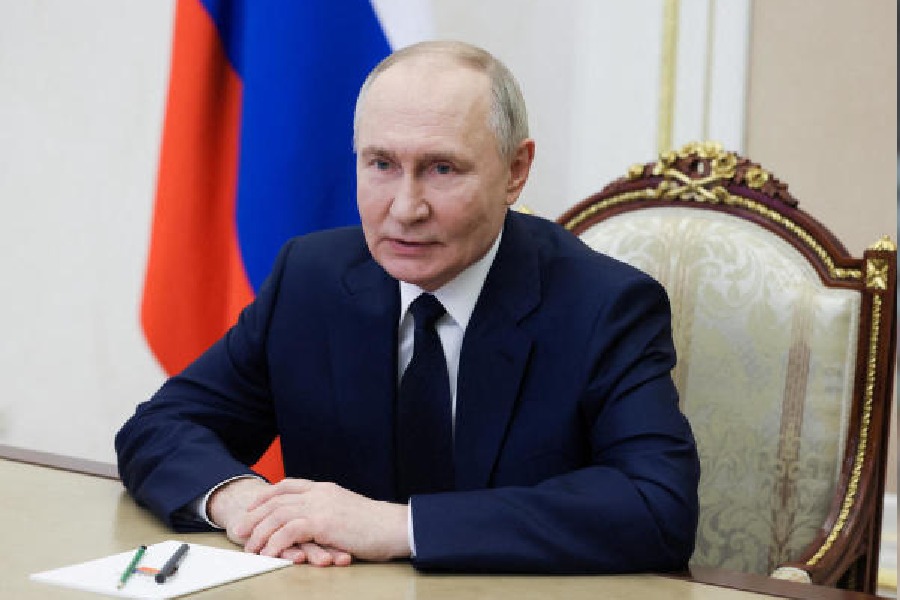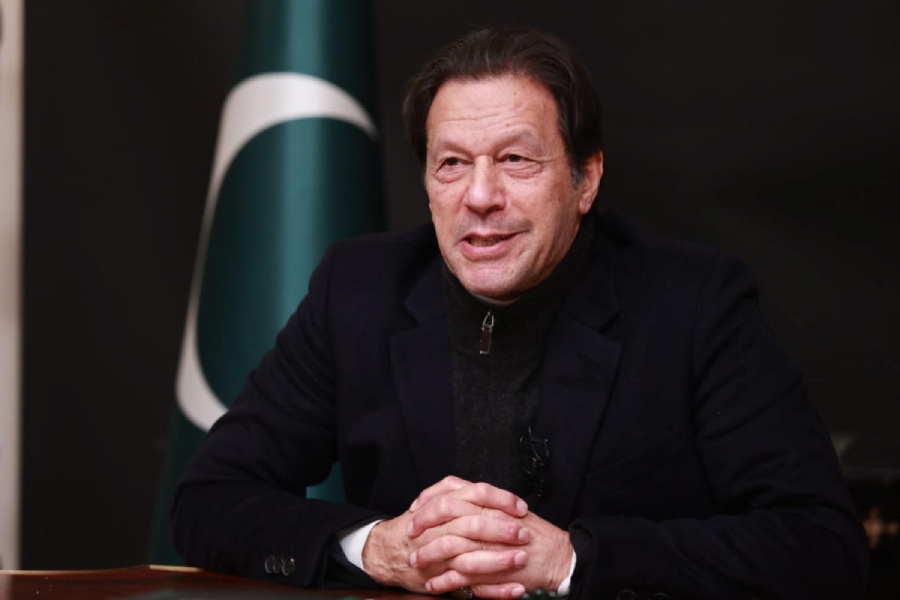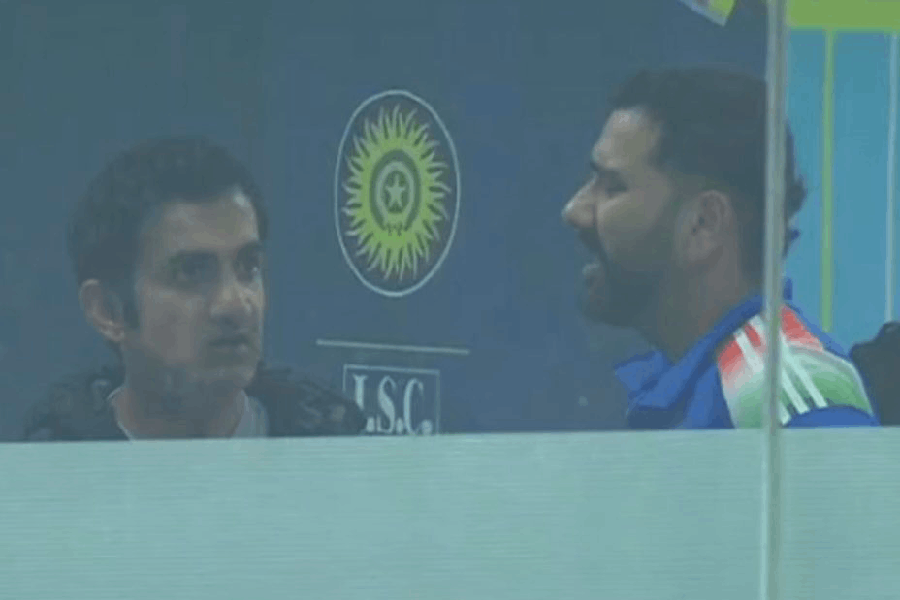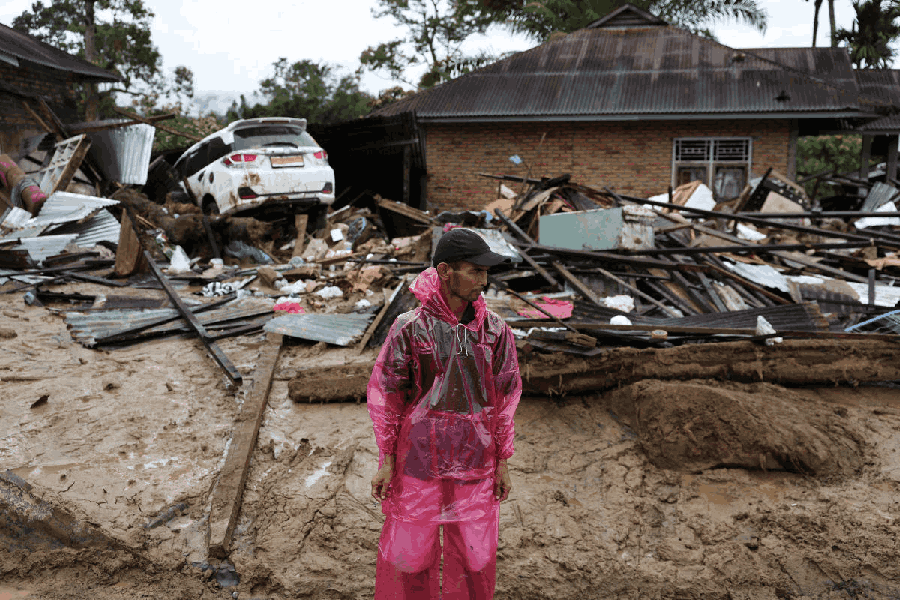nThe doctor had been showing a video of himself performing robotic knee surgery for several minutes before a voice from the audience cried out: “But where is the robot?”
“Robotic surgery doesn’t mean a robot will walk up on two legs and perform the operation. It's a robotic arm under the control of the human surgeon,” said Dr Soumya Chakraborty, senior consultant orthopaedic at Fortis Hospital.
The event, organised by the Association of Bidhannagar Citizens (ABC), a residents’ forum for the welfare of the township, aimed to dispel common myths about robotic surgery and reassure attendees of its safety and effectiveness.
“This technique has a success rate of over 99 per cent,” Dr Chakraborty told the audience. “I draw my surgery plan on the knee, the robot maps this as a 3D anatomy for my reference on a screen, and I hold a robotic saw which then guides my hand for precision. It takes about 50 minutes to operate on one knee, and the pain is significantly less than in the traditional procedure.”
But he emphasised that the doctor is in control here, not the robot. “Robotic systems are tools that assist the surgeon; they do not perform the surgery autonomously. The doctor takes the final decision.”
Dr Chakraborty also reassured patients about life after surgery. “After total knee replacement, one can walk, swim, and cycle. The implants may wear out after 20 years, but one can take steps to ensure their longevity. It is only advised not to run or sit on the floor post-surgery, as the stress involved in getting up can hasten the implant’s wear and tear.”
The audience wanted to know the causes of knee pain, to which the doctor cited constitution, age, weight, and family history as contributing factors.
“Pain indicates that the cartilage has worn away and that the underlying bone is eroding. You know it is time for surgery when the pain does not subside at all. Sometimes, due to other problems like heart conditions in the patient, surgery isn’t possible, so we have to make do with lubricant-like injections. But if necessary, both knees can be operated upon together, and the patient can walk with a walker the very day after surgery,” he said.
Ritesh Basak, secretary of the association, said the group aims to work for the welfare of Salt Lake, but that the health of its residents was a priority too. “Robotic knee surgery is becoming popular now, but many are still unsure about the procedure. Through this talk, we wanted to raise awareness,” he said.
Epic comedy
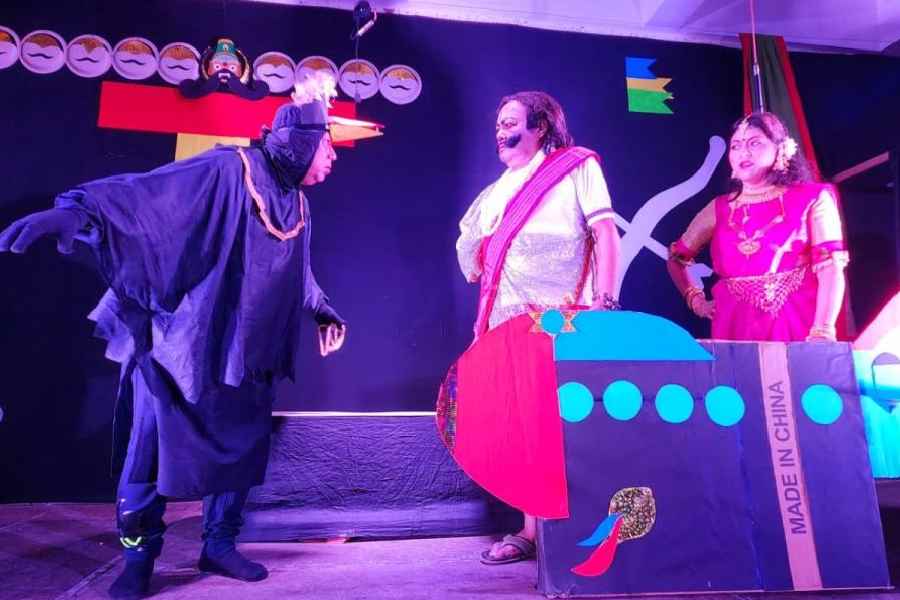
Jatayu confronts Ravana as he tries to kidnap Sita on a “made in China” Pushpak Rath, in Kalikaler Ramayan staged by BE College Exstudents Club
Ravan kidnaps Sita on a “Made in China” pushpak viman; Hanuman takes a flight to Lanka and is exhausted by the serpentine immigration queue at the airport; Lakshman accompanies his brother to the forest in shorts, shades and a camping backpack and Sita’s only problem in living in the woods is the lack of WiFi!
All this was packaged in a smart and hilarious play, titled Kalikaler Ramayan, at CK Block’s BE College Ex-Students Club. While the makers clarified this wasn’t to be confused with the Valmiki Ramayana, the drama was loosely based on the original but imbued in the materialistic values of Kaliyug. What made it funnier was that the dialogues all rhymed.
The piece was incidentally written by Pritam Basu, a playwright who happens to be a 1983 alumnus of the college. “We later sent Pritam a video of our play and he said the Ravan in it was just as he had imagined his character to be,” smiled Kamal Simlai, a GC Block resident who played the king of Lanka. “This is the biggest compliment I could get.”
The laugh-a-minute also had scenes of Bharat (played by Partha Pratim Ganguly) coming to Ram (Srikumar Bhattacharya) and Lakshman (Gaurav Dutta) in the forest to lament that their Facebook and Twitter accounts were overflowing with complaints after Ram left. In the “sonar horin” act, Sita hurriedly sends out the men in search of the deer, smacking her lips at the prospect of barbecued venison for dinner.
The props, lighting and background score had been designed by AE Block residents Paratha Sarathi Bose and Mita Banerjee and the pushpak viman especially, had the audience in splits.
“I laughed out loud especially when I saw Sita emerge with two brightly coloured suitcases. She thought the exile meant a vacation at a forest resort,” said Aloke Bhattacharya, sitting in the front row. “The original Ramayana has much to learn from but this was an entertaining show in jest.”
Perhaps the most memorable part of the play was the ending, where Sita refuses to jump in the fire. “Valmiki appears towards the end but the characters, including Ram, tell him that contemporary Sita would not perform the agnipariksha. The audience appreciated this and broke into applause,” said Kasturi Basu, an IA Block resident who played Sita. “I myself have often wondered about the ending of this epic and think this twist sends a progressive message to society today.”
“From a north Indian standpoint, where they staunchly worship lord Rama, this play may be considered blasphemous but in erudite Bengali culture, some light-hearted fun with deities has never been seen in a negative light,” said Kunal Bhattacharya, who directed the play.
“We expect educated society to see the overwhelming humour of the play that does not intend to hurt religious sentiments. We hope this withstands the current onslaught on free thinking in the garb of defending religious sensitivity,” he added.

